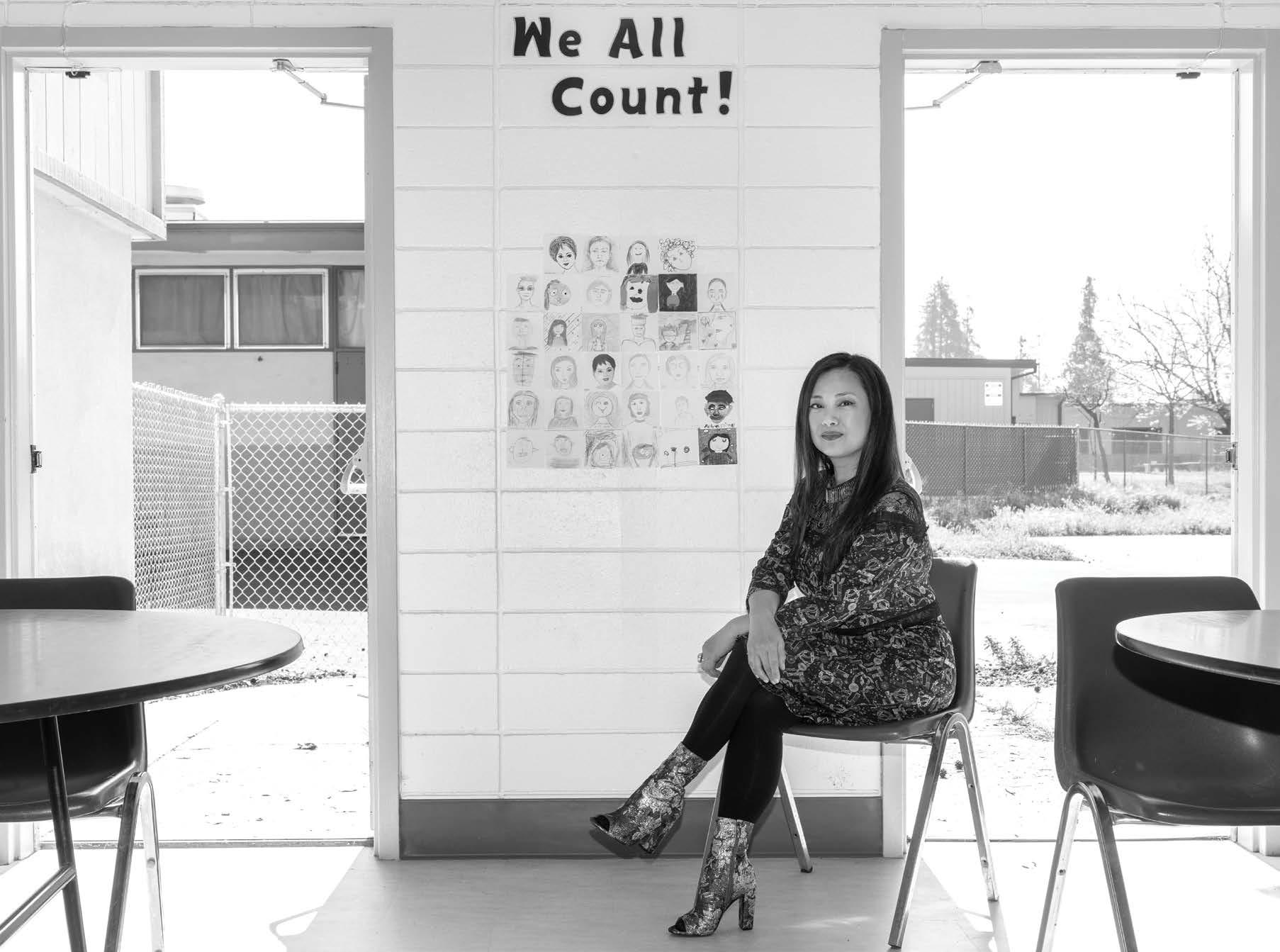
4 minute read
Chopsticks Alley Art
Written by Esther Young, Photography by Glo Salcido
The more attention that our careers and home lives demand of us, the deeper we feel the urge to return to ourselves—our origins and the people who remind us of our power in the spaces we inhabit.
Chopsticks Alley Art cultivates this cultural and artistic oasis, run by and for the people whose voices it amplifies. Coordinating gatherings ranging from cultural cooking classes to poetry performances to festivals to pioneering art exhibitions, they expertly frame traditional values in awareness with the new and celebrate these bright new expressions with delicious food at events that are nearly always sold out. But altogether, the volunteers and artists behind Chopsticks Alley Art serve one main mission: to bring visibility to the brilliance of individual Southeast Asian cultural expressions that are not yet recognized in the mainstream.
Trami Nguyen Cron, the founder of Chopsticks Alley Art, lived in cultural crossroads for most of her life. In the 1980s, when many Vietnamese immigrants were fleeing postwar communism by boats, Trami became a political refugee in France. Because her familial structure was changing as well, she flip-flopped between American and French schools, jumping back and forth between grades. Chopsticks Alley Art was born out of a need she felt herself, after earning an American marketing degree, climbing the corporate ladder, and starting several successful businesses of her own. Looking up novels about Vietnamese Americans one day, she found mostly narratives about refugees and boat people. “We have this beautiful culture and so many stories,” she thought to herself. “I’m going to write mine.”
Her 2016 debut novel, VietnamEazy: A Novel about Mothers, Daughters and Food, placed her in San Jose, which contains the largest Vietnamese population outside Vietnam. As a trilingual emcee for community events, Trami noticed there was plenty of media and entertainment catering to the interests of older Vietnamese folks. When she proposed starting a forprofit publication for a younger Vietnamese audience to her reader base, the response was overwhelmingly positive.

Chopsticks Alley, the forprofit publication, is separate from Chopsticks Alley Art, but the two organizations work in tandem, feeding talent from the art nonprofit into the publication. Chopsticks Alley’s multimedia offshoots, which include a talk show via Facebook Live, a podcast, and regular blog entries, were developed by a passionate group of volunteers. About half of these volunteers are artists themselves, and many of them are young Vietnamese and Filipino Americans, who also have a page dedicated to uniting and empowering the voices of their community.
In 2018, Chopsticks Alley Art received support from Knight Foundation to program their first art exhibit, titled Salt Stained. Its opening at Art Object Gallery in Japantown was historically groundbreaking, being the first event in San Jose where the Vietnamese community co-mingled with the Japanese community. “Both of our communities grew out of a diaspora, but World War II left an ugly mark on the relationship,” Trami reflects.
Along with sharing their art outside their community, Chopsticks Alley Art also aims to bridge a generational gap within the Southeast Asian community. “In the Asian culture we’re taught to be humble—to not really express what we want,” Trami says. For creatives, familial pressure to pursue a technical career path pits traditional thinking against individual passion. Through grants with SVCreates and the San Jose Office of Cultural Affairs, Chopsticks Alley Art created a beautiful program to reconcile this difference.
“Mostly what older Vietnamese folks know is the impressionist or realist art, because that’s what they learned in Vietnam,” Trami points out. “So when they look at something that looks odd, they tend to not like it.” Through a program that takes seniors on bus tours to museums and galleries in downtown San Jose, Chopsticks Alley Art guides the older generation into considering what the artist wants to say, as well as understanding the different career paths in art, ultimately coming to value art.
Chopsticks Alley Art strives to bring their people’s artwork outside of their community, into the mainstream, so that “our narrative, our voices, our version of things is being seen.”
Chopsticks Alley Art wishes to honor the memory of the late Dr. Jerry Hiura, who opened the doors of Chopsticks Alley Art to Japantown and was one of the founding members of the organization. He recently passed away in December 2019.

Chopsticks Alley Art guides the older generation into considering what the artist wants to say, as well as understanding the different career paths in art, ultimately coming to value art.





